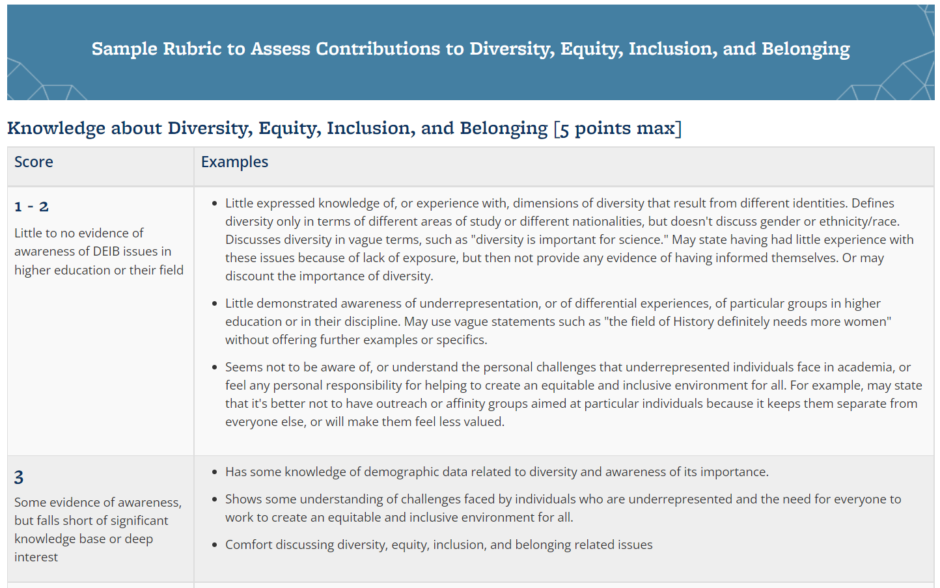As I write in the introduction to Doing Economics paraphrasing William Gibson, a lot of hidden-curriculum information is already here; it’s just not evenly distributed. An exchange I had on Twitter this morning made me realize that a lot of people may not know how to write a good diversity statement. This is my effort to level the playing field along that dimension.
* * *
Increasingly, universities and other institutions hiring researchers ask for personal statements about diversity, equity, inclusion, and belonging (DEIB) from applicants in addition to cover letters, CVs, writing samples, letters of recommendation, teaching evaluations, and so on.
Having sat on search committees, I have seen all sorts of diversity statements, from the extremely bad to the very, very good. As someone who cares about all parts of DEIB, I worry that applicants from some universities are taught how to write a good diversity statement, whereas applicants from other universities are left to figure it out on their own.
So in the interest of leveling the playing field, I thought I would link to what is perhaps the best resource for writing diversity statements, namely UC Berkeley’s Office for Faculty Equity & Welfare’s “Rubric for Assessing Candidate Contributions to DEIB.” Why do I think this is the best resource? Because when I read applications, applicants from the UC system usually have the best DEI statements.
Specifically, that rubric assesses whether applicants discuss three distinct areas: “knowledge and understanding (section 1), track record of activities to date (section 2), and plans for contributing at Berkeley (section 3).”
Obviously, if you are not applying for a position at UC Berkeley, you will want to either skip the third section, or write it for the specific job you are applying for. For example, when I sat down to write my own diversity statement, it had two sections: (i) a discussion of my knowledge and understanding of DEIB, and (ii) my track record of activities contributing to DEIB to date.
The most important section of the webpage I linked to above is the sample rubric, which tells you exactly the kind of thing you should be discussing, and what counts as good versus what does not (make sure to check it out before writing your own statement; my screen capture leaves out a lot of information):
